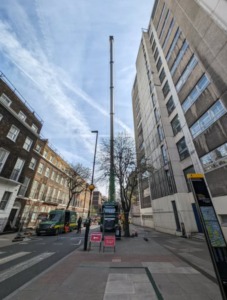We need to get more students and consultants interested in Stereotactic radiosurgery writes Ms Mary Murphy, MD Fellowship of the Royal Colleges of Surgeons and Clinical Director of Neurosurgery and Consultant Neurosurgeon.
Stereotactic radiosurgery (SRS) has an increasing role to play in the treatment of neurological diseases. Currently, SRS offers a non-invasive outpatient treatment option for complexly located brain tumours and neurovascular lesions. But SRS systems such as Gamma Knife are also increasingly recognised as an alternative treatment option for functional neurological conditions such as tremor, epilepsy, and some psychiatric disorders.
However, currently there is no formal or structured pathways for junior doctors to specialise in SRS, so it is not well known as a treatment modality among the wider medical community.
There are various indications for SRS, and these are expanding with developments in research on how this technology can be utilised. Expansion like this is vital as the global population is ageing at the fastest rate ever, according to the UN’s World Special Report 2023. And while brain tumours can occur at any age, the risk of developing most pathologies increases with age – the risk of brain tumours is greatest in those aged 85-89, an age group that tolerates surgery very poorly. This means that the demand for treatment systems like SRS is steadily growing.
Indications for Gamma Knife radiosurgery are also expected to extend to ‘nodular’ lepto-meningeal disease and other advanced forms previously reserved for palliative whole brain radiotherapy, which tends to impair and/or reduce cognitive brain function. Despite such expected developments though, there is a lack of time and resource among current consultants to proactively encourage and attract students – especially without any initial structured exposure.
Very few centres offer SRS treatment, especially with the equipment and installation of these systems driving a steep upfront investment cost. Not only does this mean that cases suitable for SRS are not being referred, and therefore receive treatment modalities that carry higher risk, unnecessarily; but it also means that there is a lack of awareness among junior doctors that this is an area in which they can specialise.
If there is not robust neurosurgical representation in this area, there is a risk of SRS becoming the domain of radiation oncologists. While both neurosurgeons and radiation oncologists are critical voices to sit on an MDT to determine the best course of treatment, the pathologies treated by SRS are traditionally neurosurgical pathologies. This means a neurosurgeon is best placed to give a balanced view of the most effective treatment, and they can best do that if SRS is in their armoury, or at very least, on their radar.
Currently, the main entry point for junior doctors to specialise in SRS is if they rotate through a centre or work under consultants with a direct interest in this area. This means that they usually ‘fall into’ it by accident. As neurosurgery is not covered in detail during medical school, it takes a remarkable person to seek out SRS as a speciality.
So, there is a potential problem with exposure to SRS expertise and the next generation of medical professionals.
Ideally, currently practicing neurosurgeons should take more control of how SRS expands – in terms of how junior surgeons are educated, and how to involve the existing medical community. Neurosurgery is a vast and very complex area, so it takes an exceptional individual to have the capacity to encompass that extra expertise.
For example, over the past 5-6 years, from approximately five vascular fellows I have trained, only one has managed to take the time to shoe-horn SRS training into an already busy day.
Where traditional neurosurgical education has been focussed on open surgery, medical developments (such as functional neurosurgery, high CPU and focused radiation) are moving away from open surgery in efforts to mitigate risk. Importantly, medical students in neurosurgery should see more than traditional operating practices, yet the neurosurgical representation in this area is not strong enough. More presence is needed in the way of developments, research and academia to attract more practitioners to this area.
One way to address this challenge is to educate consultants in more peripheral units in SRS. Many of them are typically removed from updates and developments in the area. As the indications for SRS are much greater than they were ten to fifteen years ago (and it has a lot to offer elderly, sick or frail patients, for whom open surgery is too risky), there should be a consideration for SRS with almost any patient presenting with neurosurgical pathologies.
In an effort to widen this knowledge base, I recently chaired a session on Radiotherapy for the Society of British Neurological Surgeons Conference Cork 2023 (SBNS).
The panel comprised national and international experts who gave an overview both on traditional SRS platforms like Gamma Knife as well as the whole of SRS. The purpose of the discussion was to provide education to all levels of interest from medical students to consultants to make SRS more accessible, more mainstream and relevant for neurosurgeons who otherwise would not be thinking about it. The hope is to get consultants involved with SRS and communicating more with those specialising in SRS, and specifically to get training grade neurosurgeons involved and understanding when to refer patients.
Ultimately, we must give future generations of neurosurgeons more structured learning around SRS. This puts them in the strongest position to deliver the best possible patient care.


